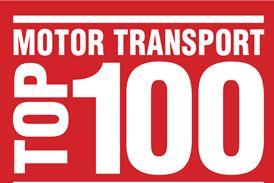
The mayor of London has revealed the next steps in plans to rid the capital of “dangerous lorries”, which could potentially see breaking the Direct Vision Standard made a criminal offence.
Under the mayor’s plans the “most dangerous” HGVs will be banned from London’s streets entirely by January 2020.
These HGVs, described as often off-road variants, would be zero-rated under the five-star Direct Vision Standard.
The standard is determined by what a driver can see from his cab directly without aids, and is still being refined with more vehicles set to be classified.
However, under the scheme, HGVs entering London would be required to have at least a three-star rating by 2024.
A TfL spokesman confirmed that Loughborough University Design School has been contracted to handle the assessment of vehicles under the star system and "is working with manufacturers now to analyse and rate vehicles".
To drive adoption, TfL is planning to include references to the Direct Vision Standard within newly advertised contracts from April.
This it said would help inform its suppliers about the standard and ensure there is a plan for compliance with Direct Vision Standard requirements when a contract is awarded.
"It will ensure we are leading by example and work with our supply chain to raise compliance ahead of any London-wide restriction," said a TFL spokesman.
Enforcement
Although yet to be finalised via further consultation, TfL has indicated it is not in favour of a civil enforcement charge for the Direct Vision Standard.
It said public feedback to a previous consultation on improving direct vision from HGVs, showed 56% of respondents supported a criminally enforced ban, something it also favours.
A criminal offence would see enforcement conducted by the police via a fixed penalty notice or, if convicted in a magistrates' court, a fine. This would be enforced most likely via co-ordinated Traffic Regulation Orders akin to the Safer Lorry Scheme.
Leon Daniels, managing director of surface transport at TfL, said: “Removing lorries that are unsuitable for London’s busy roads will improve road safety for all. Our Direct Vision Standard will be key in this and by continuing to engage with the freight industry it can begin to have a positive effect now.
“This won’t just increase safety, it will improve how our streets are used. We now know that another benefit of being able to make eye contact with a driver is that it makes pedestrian and cyclists feel safer, and this feeling can make our streets nicer places to live in and visit.”

Councillor Julian Bell, chairman of London Councils' Transport and Environment Committee, said: “It is taking far too long for lorry manufacturers to realise that their outdated juggernaut-style vehicles are not suitable for our city street environments. More needs to be done to improve lorry safety standards at a national and international level but in the meantime, I welcome this intervention from TfL to set a safer standard for London.
“We need to encourage as many people as possible to cycle and walk when they can, to better improve our chances of tackling key priorities such as congestion, air quality and improving the health of Londoners."
Penalty levels will be subject to further consultation.
TfL has today also launched its first public consultation on the Direct Vision Standard, which is open until 18 April.
The FTA has previously described the Direct Vision Standard as a sensible way forward.
Research on HGV indirect vision
Research conducted by Leeds University and ARUP, showcased at last year’s Freight in the City Expo, shows that the amount of direct vision a driver has could be a crucial factor in allowing a dangerous collision to be avoided.
Using a simulator to replicate real-life driving, the researchers found that HGV drivers respond, on average, 0.7 seconds slower when checking blind spots and monitors compared to directly through the windows. This delay can result in a lorry travelling an extra 1.5 metres before seeing a nearby road user, enough to cause death or serious injury.
London mayor Sadiq Khan said: “This new research being released today shows how important it is we take bold action to address dangerous and poorly designed lorries operating in the Capital. HGVs with poor vision of cyclists, pedestrians and other road users from their cabin should simply not be allowed on London’s roads. Every time someone is killed by a lorry on London’s roads it is an appalling tragedy.
“Our ground-breaking Direct Vision Standard will be the first of its kind in the world, and TfL will lead by example by not using any zero-star lorries in its future supply chain.
“By continuing to work closely with industry, and beginning our first consultation now, we’re confident that many of the most dangerous lorries on London’s roads will be upgraded before our ban comes into place.”
Proposed steps to implementation
1) Winter/spring 2017: carry out this first phase of consultation. TfL will also work with manufacturers to rate vehicles against the Direct Vision Standard.
2) Spring/summer 2017: analysis and publish the responses to this phase of the consultation. New Euro-6, ULEZ compliant HGV models will have been rated to the Direct Vision Standard to inform operators buying new vehicles.
3) Autumn 2017: complete the impact assessment of the use of Direct Vision Standard on London and finalise proposals for any ban or other restrictions on zero or low rated Direct Vision Standard trucks.
4) Spring 2018: we will launch a statutory consultation on the appropriate regulatory measure to enable any ban or other restriction, subject to government and European Commission support.
5) Pre-2020: a lead-in period to allow necessary adjustments and preparation for compliance.
6) Early 2020: enforcement of the regulatory measure for the Direct Vision Standard scheme to go live.










